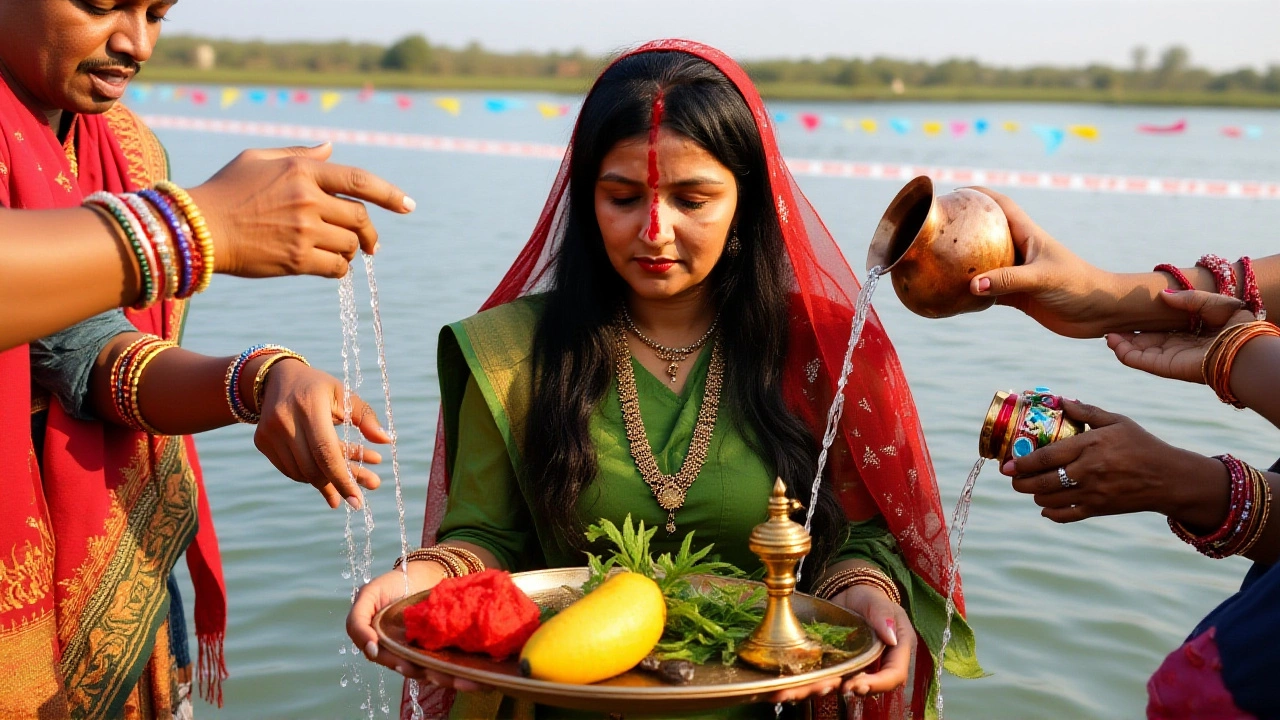Chhath Puja – Traditions, Rituals & Recent Highlights
When exploring Chhath Puja, a four‑day Hindu festival dedicated to the worship of Surya (the Sun God) and his consort Usha. Also known as Surya Namaskar, it blends intense fasting with sunrise‑and‑sunset prayers. Surya is the central deity, while Usha represents the dawn that follows his light. The festival’s core idea is gratitude for life‑giving energy and a plea for well‑being.
One of the most striking aspects is the strict fasting rule. Devotees abstain from food and water for 36 hours, then break the fast only after the evening Arghya offering is completed. This ritual involves standing in water, usually a river or pond, and presenting a mixture of milk, yogurt, and seasonal fruits to the sun as it sets. The dual timing—morning and evening—creates a rhythmic pattern that mirrors the sun’s journey across the sky.
Regional Flavors and Community Impact
While the core rites stay the same, Mithila in Bihar and the adjoining parts of Nepal add unique cultural layers. Folk songs called ‘Kosi’ echo along the banks of the Kosi River, turning the celebration into a vibrant social gathering. In urban areas like Delhi and Kolkata, community groups arrange temporary ghats to replicate the riverine experience, showing how the festival adapts to different landscapes.
The event also sparks economic activity: local markets see a surge in demand for bamboo baskets, incense sticks, and seasonal fruits such as oranges and bananas. Artisans who craft the traditional ‘thekua’ (a sweet) benefit from the heightened sales, linking religious devotion with livelihood support. This synergy highlights how a spiritual observance can fuel regional economies.
Modern concerns have entered the conversation, too. Environmentalists urge participants to keep riverbanks clean, prompting many organizers to launch “clean‑river” campaigns alongside the rituals. The idea is simple: maintain the purity of the water where the Arghya is offered, preserving both the ecological and spiritual sanctity of the site.
From a social perspective, Chhath Puja reinforces gender roles in a collaborative way. Women typically prepare the food, arrange the ceremonial gear, and lead the ‘Prakash’ (light) ceremony, while men often handle the physical setup of ghats and transport the offerings. Despite traditional expectations, these roles have become more fluid in younger generations, reflecting broader societal shifts.
Health implications are also noteworthy. The prolonged fast can be challenging, yet many devotees report a sense of detoxification and mental clarity after completing the rites. Medical experts advise a gradual re‑introduction of fluids and light foods to avoid digestive shock, aligning traditional wisdom with modern health guidance.
All these dimensions—spiritual, cultural, economic, environmental, and health—intersect to make Chhath Puja a multi‑layered phenomenon. Below you’ll find a curated collection of recent articles that dive deeper into each of these facets, giving you a full picture of why this ancient festival continues to thrive in today’s world.

Chhath Puja 2025: Dates, Rituals and Why It Matters
Chhath Puja 2025 runs Oct 25‑28 in Bihar and surrounding regions, featuring sunrise‑sunset rituals to honor Surya and Chhathi Maiya, with precise timings and growing national visibility.